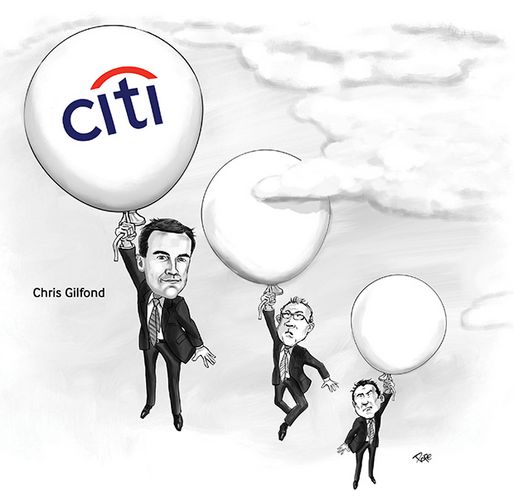Several banks reaped the benefits of yet another record year for Latin American new issuance volumes in 2014, but none were as conspicuous in their dominance of cross-border trades as Citigroup. The bank is IFR’s Latin America Bond House of the Year.
With 58 deals under its belt from 13 different countries and US$18.83bn-plus in new-issue volumes credited to the bank, Citigroup stands head and shoulders above its rivals.
“2013 was a good year, but 2014 was even better,” said Chris Gilfond, Citigroup’s co-head of Latin America capital markets origination.
Its league table position may have been distorted somewhat by a US$5bn issue for Venezuelan state-controlled oil company PDVSA – broadly viewed as a policy tool for the government rather than a truly market-driven trade. But even discounting that deal, Citigroup still runs neck-and-neck with HSBC, which placed number two in the league tables for the awards period but lagged the US bank in terms of deal quantity and geographic reach.
That Citigroup has been able to maintain its supremacy in a highly competitive market speaks well for a financial institution that just a few years ago struggled to rebuild its reputation in the wake of the global financial crisis.
In 2014, Citigroup had a notable presence in the trends that dominated LatAm DCM headlines. Whether it was liability management, marquee trades for blue-chip names, off-the-run sovereigns or debut corporate names, the US bank was there.
It also showed consistency in its ability to provide underwriting in core currencies, namely US dollars, euros, yen and pesos.
“These markets are relevant to us because they are relevant to so many of our clients and [are] replicable and scalable businesses,” said Gilfond.
Indeed, Citigroup was the only bank covering LatAm DCM in 2014 that could boast of being the lead on yen, euro, US dollar and local currency trades for regional borrowers.
The yen market, albeit still exclusively the domain of blue-chip credits, is increasingly being viewed as an alternative source of funding for LatAm borrowers, and Citigroup is one of the few US or European players involved in this space.
It acted as lead on Mexico’s latest multi-tranche Samurai, which included a rare 20-year tranche, as well as on a yen issue from Banco de Chile.
“We made a bet early on that Japan was an emerging funding centre,” Gilfond said.
It is a similar story in the eurozone, where investors are seeking alternative investments beyond their borders and where Citigroup has also been active, bringing euro trades for Mexican cement company Cemex, Brazil’s Votorantim Cimentos and Central American development bank CABEI.
This came on top of a string of marquee trades in the US dollar market for blue-chip names such as Pemex, Ecopetrol and America Movil.
Aside from being involved in Brazilian oil company Petrobras’ yearly multi-billion dollar foray into the international bond markets, Citigroup also helped Mexican Coca-Cola bottler KOF reposition itself among US high-grade investors that were still unfamiliar with the credit.
The US$2.15bn multi-tranche trade saw pricing on the 10-year tranche come about 40bp inside the existing curve on an interpolated basis, and at 155bp the 30-year tranche was the tightest ever for a Latin American corporate.
In a market where banks increasingly have to share the spoils with a string of leads, bringing complex and innovative trades with higher fees is essential to boosting the economics of any bank with a DCM business in LatAm.
Citigroup was involved on more than its fair share of such deals. These ranged from Mexican debut names such as data centre operator KIO Networks (Sixsigma) and gas pipeline company Fermaca to a rare hybrid offering for Chilean utility AES Gener and a jumbo US$1.1bn bond for Chilean LNG terminal GNL.
It also helped Columbus International – a Barbados-based cable and broadband services provider – to re-profile its credit standing among rating agencies and refinance expensive double-digit debt with a new US$1.25bn 7.375% seven-year non-call four that helped prepare the ground for Cable & Wireless’s takeover of the company later in the year.
Similar creativity was required for Ecuador’s return to market after a nearly 10-year absence following its 2008 default.
The liquidity-induced search for yield among buyside accounts certainty helped, but leads had their work cut out for them as they set out to sell a sovereign tainted by its reputation as a serial defaulter. Such efforts resulted in a tightly priced and upsized US$2bn 10-year at 7.95%.
“It was a big surprise to the upside in terms of demand. We had a close to five times oversubscribed transaction,” said Gilfond.
To see the digital version of the IFR Americas Review of the Year, please click here.
To purchase printed copies or a PDF of this report, please email gloria.balbastro@thomsonreuters.com.

